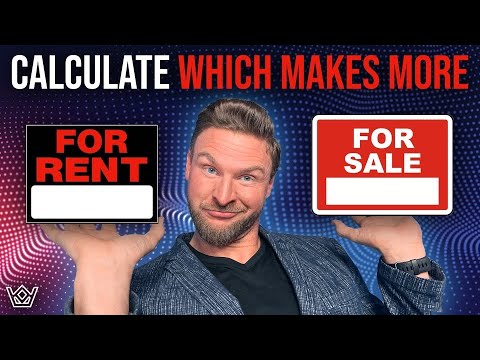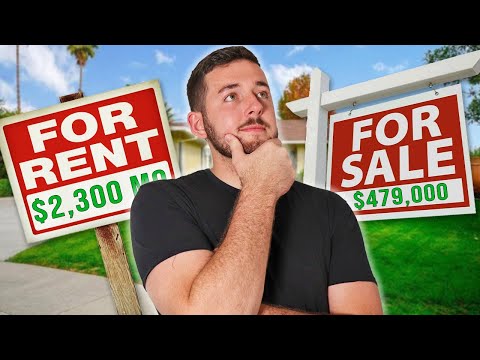Navigating the real estate market can be tricky, especially when you’re considering unique options, like selling your home in Fort Walton Beach but still wanting to live in it rent-free. Did you know that some negotiations could allow this arrangement?
This article will explore the various possibilities and schemes like home reversion and rent back agreements that might make this scenario a reality for homeowners.
Ready to delve into these intriguing alternatives?
Let’s get started!
Key Takeaways
- Homeowners can explore options like home reversion schemes to sell their house and still live in it rent-free. This allows them to receive cash while retaining the right to stay in the property for the rest of their lives.
- There are full and partial home reversion plans available, depending on whether homeowners want to sell the entire property or only a portion of it. Each option has its own considerations, such as immediate cash versus ongoing ownership rights and potential equity growth.
- Other alternatives include selling directly to real estate investors or cash buyers for quick funds, using bridge loans for accessing equity while looking for a new place, or downsizing to buy a smaller property outright.
- It’s important to consider factors like costs associated with home reversion schemes, benefits of selling your house for cash (e.g., immediate money, avoiding financing delays and agent fees), and potential drawbacks of staying in your home after selling (e.g., loss of control over property changes or uncertainty if the new owner sells). Seek professional advice before deciding which option is best for you.
Selling your house and living in it rent-free typically isn’t feasible, as the new owner would assume possession after the sale. However, negotiating a short-term leaseback with the buyer might be an option in certain cases.
Understanding Home Reversion Schemes for Staying in Your Home After Selling
A home reversion scheme allows homeowners to sell a portion or all of their property while retaining the right to live in it rent-free for the remainder of their lives.
How a home reversion works
A home reversion plan lets you sell all or part of your house. You can do this but still live in the house. You won’t pay rent. When you die or move out, the buyer sells your home.
If a piece of the house is yours, they give some money back to you or your family from the sale. This way, you can get cash now and have a place to live.
Full vs. partial home reversion plans
There are different types of home reversion plans to consider when you want to sell your house but still live in it. One option is a full home reversion plan, where you sell the entire property and continue living in it rent-free.
This means you no longer own any portion of the house.
Another option is a partial home reversion plan, where you sell only a portion of your house, such as 50%. In this case, you would still have ownership rights to the remaining percentage and can continue living in the property.
When deciding between full or partial home reversion plans, it’s important to consider your financial needs and goals. Selling the entire property can provide immediate cash, while selling only a portion allows for ongoing ownership rights and potential equity growth.
Assessing if a home reversion scheme is right for you
To determine if a home reversion scheme is right for you, there are a few factors to consider. First, understand how it works: you sell a portion or all of your home to a lender in exchange for money.
Then, you continue living in the house without paying rent until you pass away or move out permanently.
Consider whether a full or partial home reversion plan suits your needs better. With a full plan, you sell the entire property and receive the lump sum. A partial plan allows you to sell only part of your home while retaining ownership of the remaining share.
Think about your financial goals and personal circumstances before deciding on this type of scheme. It’s essential to assess the costs associated with it and weigh them against any potential benefits.
Other Options for Staying in Your Home After Selling
Other options for staying in your home after selling include exploring quick cash options aside from home reversion schemes and considering the advantages of a home reversion scheme.
Quick cash options aside from home reversion schemes
If you’re looking for quick cash options besides home reversion schemes, there are a few alternatives to consider. One option is to sell your house directly to a real estate investor or cash buyer.
This can provide you with immediate funds without the need for a lengthy selling process. Another option is to explore bridge loans, which are short-term loans that allow you to access the equity in your home while you search for a new place to live.
Additionally, some homeowners may choose to downsize and use the proceeds from selling their larger home to buy a smaller, less expensive property outright. These options can offer flexibility and financial freedom when it comes to staying in your home and accessing quick cash.
Additional Resources
What you shouldn’t fix when selling a house
Tax questions to ask when inheriting a house
Options If Your Behind on Your House Payments
Tips for selling a house in the Winter
Do I need the original deed to sell my house
Can I Sell My House if I’m Behind on Payments
Advantages of a home reversion scheme
A home reversion scheme can have several advantages for homeowners who want to sell their property and continue living in it. Firstly, it provides a way to release equity from the house without having to move out.
This is especially beneficial for older homeowners who may have limited income and need extra funds for retirement or healthcare expenses. Secondly, with a home reversion scheme, you don’t have to worry about paying monthly rent or interest on a loan like with other options.
Instead, you can live in your home rent-free for as long as you like or until your demise. Lastly, by entering into a home reversion plan, you maintain control over your property and still get to enjoy its benefits while accessing the money tied up in it.
Factors to Consider Before Deciding to Sell Your House and Stay Rent-Free
Consider the cost associated with a home reversion scheme, weigh the benefits of selling your house for cash, and be aware of potential drawbacks of staying in your home after selling.
Cost associated with a home reversion scheme
When considering a home reversion scheme, it’s important to understand the costs involved. While you may receive a lump sum payment from selling a part or all of your home, there are expenses associated with the transaction.
These can include arrangement fees, legal fees, and valuation costs. Additionally, the percentage of equity that you sell will also affect the amount of money you receive. It’s essential to carefully consider these costs and compare them with the potential benefits before deciding if a home reversion scheme is right for you.
Benefits of selling your house for cash
Selling your house for cash has several advantages. First, it provides an immediate influx of money that can be used for various purposes, such as paying off debts or making a down payment on a new home.
Second, selling for cash eliminates the need to wait for financing approval and reduces the risk of the deal falling through. Third, cash buyers often take properties in their current condition, saving you time and money on repairs and renovations.
Finally, selling for cash allows you to bypass real estate agent fees and commissions, maximizing your profit from the sale.
Potential drawbacks of staying in your home after selling
There are some potential drawbacks to consider if you decide to stay in your home after selling it. One drawback is that you may not have as much control over the property as you did when you owned it.
The new owner may make changes or renovations that you do not agree with. Another drawback is that your living situation could become uncertain if the new owner decides to sell the property or terminate your rental agreement.
Additionally, staying in your home after selling means that you will no longer benefit from any appreciation in its value, which could impact your long-term financial goals. It’s important to carefully weigh these potential drawbacks before making a decision.

Conclusion: Weighing Your Options to Sell Your House and Stay Rent-Free
In conclusion, there are options available for selling your house and staying in it rent-free. You can explore home reversion schemes or negotiate a rent-back agreement with the buyer.
It’s important to carefully consider the costs, benefits, and potential drawbacks before making a decision. Seek advice from professionals to help you weigh your options and make an informed choice.
FAQs about Can you sell your house and live in it rent free
1. Can I sell my house and still live in it rent-free?
Yes, you can! It’s called a rentback agreement. After selling your home, you work out a deal to keep living there until death or for an agreed length of time.
2. Is it possible to control the process when selling my house?
Sure! Whether selling back to the council or negotiating a rentback agreement with buyers, you have control over the selling process.
3. Can I sell my house even if there are renters still in it?
Yes, homes with tenants can be sold too. This option gives new owners instant income from existing renters.
4. What is this Rent Back Scheme I’ve heard about?
The Rent Back Scheme fights homelessness by letting sellers stay as tenants after they’ve sold their property – often at lower rents than market rates!
5.What if I want to buy another home after selling mine?
After renting from your buyer following a sale-leaseback or similar plan, you certainly have the freedom to explore buying a new home whenever ready.



